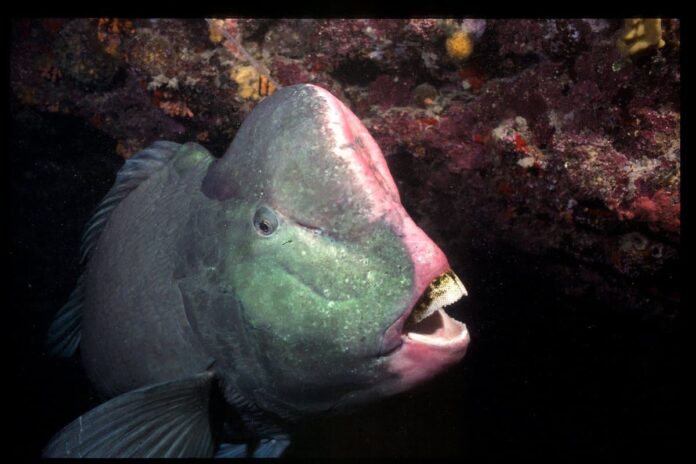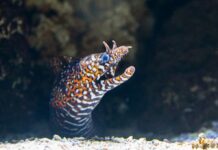Green humphead parrotfish is the largest parrotfish species among over 40 species out there. One of the most fascinating things about them is that no one species of parrotfish looks like another. However, you can easily recognize one regardless. Today, we are going to discuss the largest parrotfish species first, and more about other species later. Let me know if you find the green humphead parrotfish cool, too.
1Appearance
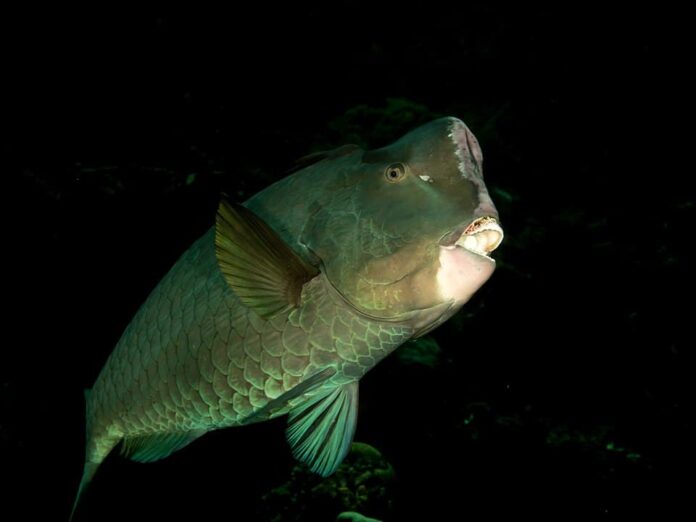
Being the largest parrotfish species, the green humphead parrotfish reaches lengths of 1.5 meters. It does not take much to tell a parrotfish, the appearance is so distinctive, nothing looks like it. The most unique feature that this parrotfish species has that others don’t is that it is uniformly covered with scales. A green humphead parrotfish has scales on its body, except for the leading edge of the head. It is dull gray in color, with scattered white spots that gradually become dark green. Juveniles are drab in color because that will help them with camouflage. But that’s not all, juveniles can change their coloration and patterning to mimic other fish, like toxic butterflyfish. This special ability plays an important role in increasing their chance of survival in the wild.
Baby green humphead parrotfish look normal, but their appearance changes as they mature. Adults develop a bulbous forehead along with exposed tooth plates that are partly covered by lips. Parrotfish have up to 15 rows of 1,000 teeth fused together into a shape that forms their signature beak. Those teeth are ever-growing, so they have to wear down them teeth by chomping on some hard stuff. Adult green humphead parrotfish also become more colorful, with the combination of iridescent green and bright pink. And this species does not display sexual dimorphism; males and females actually look the same.
2Behavior
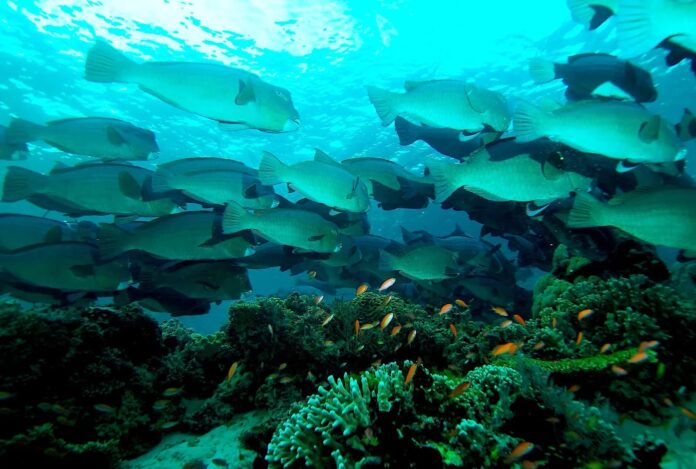
Being quite gregarious, it is not uncommon to see them hanging out in groups. Sometimes there can be more than 70 of them getting together on seaward and clear outer lagoon reefs. Normally, green humphead parrotfish dwell in harms, with one dominant male watching over a group of females. This dominant male is extremely protective, and he defends his territory from other nearby males with his large size and strength. However, they will dwell with other fish like surgeonfish and tangs. Together, they are a large group of fish that work together to locate food and assist each other in evading predators.
This parrotfish species is active during the day, and they have a very interesting sleeping routine. As the night comes, it creates a slimy, mucus cocoon around it for protection while sleeping. But there’s more than that, this cocoon also traps plankton, so it will wake up to breakfast every day. How awesome, right? And during the early morning of a lunar cycle, courtship and pelagic spawning activities begin. New hatchlings drift and feed on algae, and it takes them around 10 years to reach sexual maturity. Green humphead parrotfish can live up to 40 years, weighing up to 75 kilograms.
3Feeding & Habitats
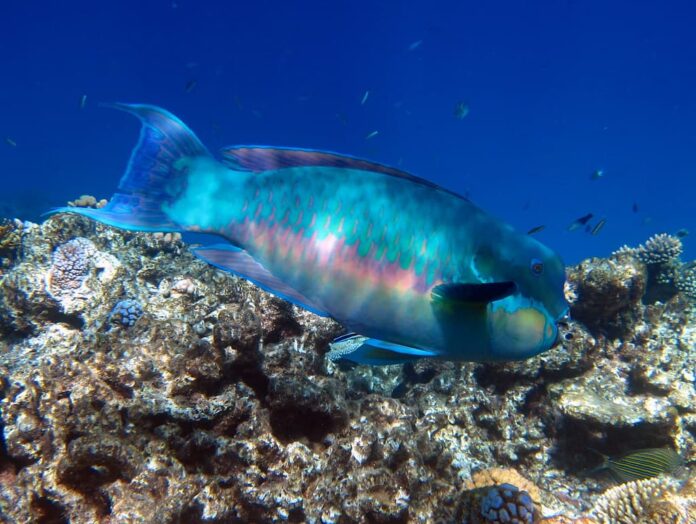
As you can see, those large teeth definitely make feeding super easy. Their main diet primarily consists of benthic algae and live corals, but it takes more than teeth when it comes to corals. The head of a green humphead parrotfish is strong enough to headbutt against coral structures and break them off into pieces. As they feast on coral, they also take on algae that smother the reef. It does sound like a destructive behavior, which is true, as they contribute to reef erosion. However, their coral sand excretions aid in creating new reefs and amazing tropical beaches of fine sand. This actually helps to keep the coral healthy while aiding the growth of new coral colonies.
Green humphead parrotfish usually hang out on reefs in the Indian and Pacific Oceans. They inhabit coral reefs from the Red Sea all the way to Samoa, Japan, and Australia. Juveniles take shelter in lagoons amongst branching coral habitats. As they grow, they move to lagoons with seagrass beds, before going to the more open water of outer lagoons. At night, they rest among caves, corals, and even shipwrecks, often in large groups.
Despite the large range, they are facing threats, and their number is not too big either. Not to mention that they have low reproduction and replenishment rates, it is not that simple for them to bounce back. Intrusion by human activities and overfishing has affected their population a lot, causing them to be listed as Vulnerable.
Related Post: Bluespine Unicorn Fish Facts

